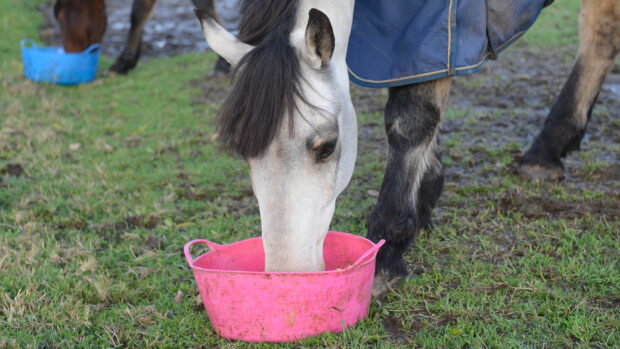The good feeding of a competition horse is one factor that contributes to a successful partnership. Good feeding augments a sound training plan, natural talent and your ambitions – bad feeding can undo them quickly.
While improving the horse’s fitness in preparation for early shows, your feeding strategy should be about forage topped up with a low-energy feed.
At the same time, you should be looking forward to the season ahead. This kind of planning is routine among top competitors.
You need to consider:
- What will the horse be doing. What do I want it to do?
- Does it hold condition or lose it easily?
- What is its temperament?
- Did the horse go well on its diet last year? How can it be improved?
- What is the quality of the forage and is it providing enough nutrition? (In the early season, there is no new crop forage, so obtaining a consistent supply throughout the first half of the season is important.)
- What supplements, if any, should I use?
- Does the horse have any susceptibility to diet-related ailments?
These points determine the type and amount of hard feed and the sources of energy required.
The international equine nutrition community is now united in advising those feeding competition horses to maintain fibre, control starch and use oil to top up energy. The precise mix depends on the discipline.
The eventing and endurance disciplines require stamina and endurance and the muscle types of event horses can adapt to use slow release energy from oil and fibre as a source of energy. Controlled levels of starch are supplied to fuel extra bursts of energy, as required in hill work or jumping.
For show jumpers and dressage horses, the work is fairly short and sharp. Starch provides the instant fuel needed for intense efforts such as jumping and high level dressage.
However, feeding competition horses can vary tremendously, depending on the individual’s temperament and attitude.



